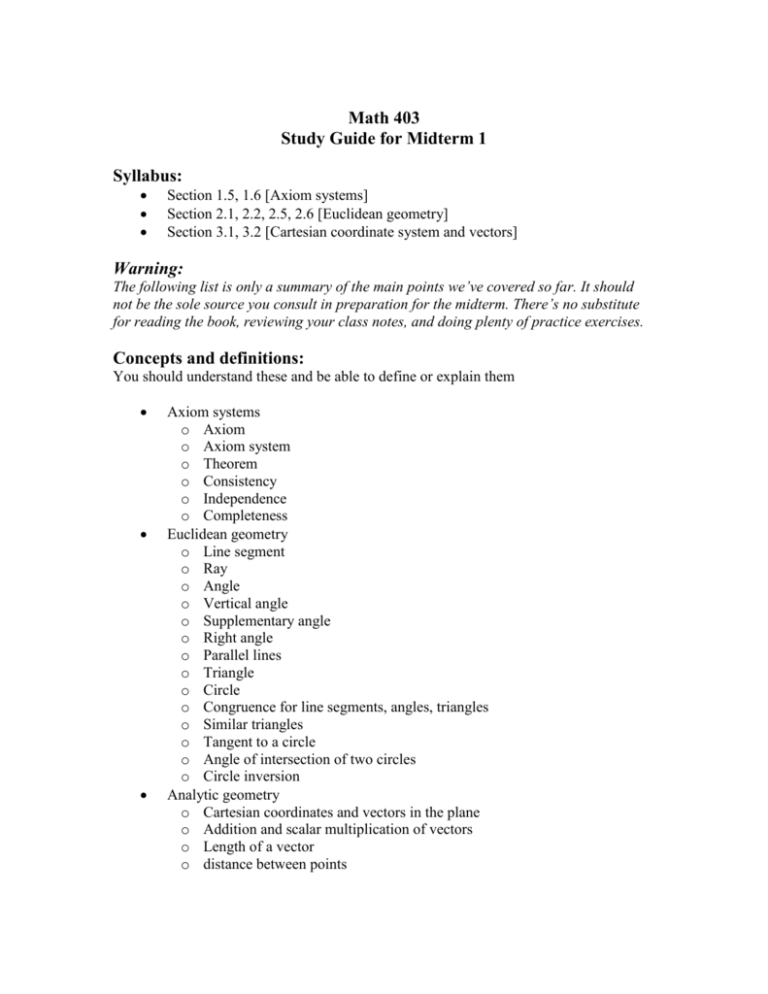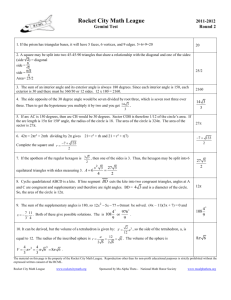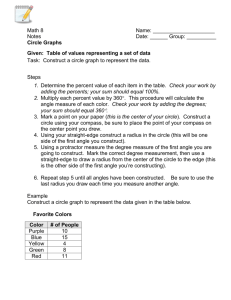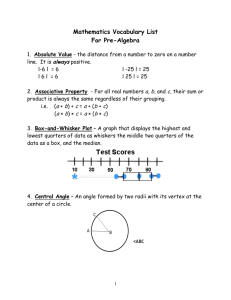Study Guide
advertisement

Math 403 Study Guide for Midterm 1 Syllabus: Section 1.5, 1.6 [Axiom systems] Section 2.1, 2.2, 2.5, 2.6 [Euclidean geometry] Section 3.1, 3.2 [Cartesian coordinate system and vectors] Warning: The following list is only a summary of the main points we’ve covered so far. It should not be the sole source you consult in preparation for the midterm. There’s no substitute for reading the book, reviewing your class notes, and doing plenty of practice exercises. Concepts and definitions: You should understand these and be able to define or explain them Axiom systems o Axiom o Axiom system o Theorem o Consistency o Independence o Completeness Euclidean geometry o Line segment o Ray o Angle o Vertical angle o Supplementary angle o Right angle o Parallel lines o Triangle o Circle o Congruence for line segments, angles, triangles o Similar triangles o Tangent to a circle o Angle of intersection of two circles o Circle inversion Analytic geometry o Cartesian coordinates and vectors in the plane o Addition and scalar multiplication of vectors o Length of a vector o distance between points Axioms of Euclidean geometry You should be able to state these Pasch’s axiom Playfair’s postulate Euclid’s parallel postulate SAS Results/theorems These are the main results we’ve seen. You should be able to state, use and prove them. If consequences of these, or other results with simple proofs are referred to in the midterm, it will be in the form of a problem (probably with hints). Criteria for congruence of triangles Criteria for similarity of triangles Pythaogoras’s theorem Exterior angle theorem (Th 2.6) The sum of interior angles in a Euclidean triangle is 2 right angles Euclid Proposition 27 and 28 (transversals and parallel lines) The angle subtended by an arc at the circumference is half the angle subtended at the center of the circle. A tangent to a circle is perpendicular to the radius drawn to the point of tangency. Two circles are orthogonal if and only if each circle is mapped to itself by inversion in the other circle. Constructions You should know how to construct these (using only a straightedge and compass) Midpoint of a line segment Bisector of an angle Perpendicular through a given point not on a given line Circle through 3 non-collinear points A tangent to a given circle through a given point outside the circle The inverse of a given point in a given circle.





